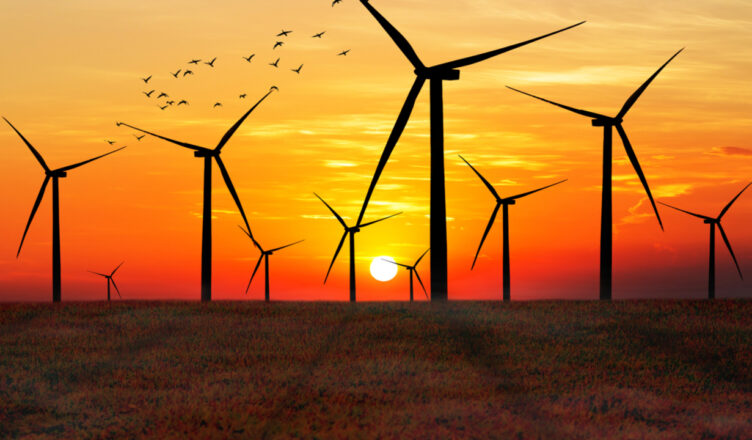Essentially, in 2020, the capacity of global wind power reached 743 GW (source). In 2019, it was 650, so there was a sudden increase despite project delays resulting from the global pandemic (COVID-19). The remarkable wind power installation rise proves that people have embraced its use.
Triggered by technological advances plus global policies against climate change, wind power is now financially sustainable. At present, the United States and China are the top wind power markets worldwide while other countries such as Europe, UK, India, and North America adopt the trend rapidly.
How Wind Power Works
Wind turbines work once air translates the carbon-fiber blades linked to the units. The blades are attached to a motor that releases electricity from kinetic energy. The energy passes through a gearbox which turns the slow rotation of the blades to an improved speed rotary wave. After that, a drive shaft is turned rapidly to run an electric generator.
Initially, onshore wind turbines ruled the market, but in recent years, technological advancement has triggered the growth of offshore wind farms. Let’s look at what onshore wind is.
Onshore wind power is defined as turbines situated on land instead of water. They are found in sparingly populated regions featuring low conservation value. The International Energy Association outlined that the production of onshore wind electricity is increasing rapidly since 2019. Also, capacity additions increased by 22% after years of stagnation.
What’s Offshore Wind energy?
Offshore wind refers to renewable and clean energy obtained through utilizing the force generated by high seas winds. The wind comes with a great speed, unlike on land wind since there are no barriers.
To utilize this resource to the maximum, mega-structures are placed on the seabed and equipped with advanced technical innovations. At present, offshore wind farms are established in shallow waters at least 60 meters deep. Also, they are situated away from marine traffic routes, coast, space of ecological interest, and strategic naval installations.
Essentially, the goal of the offshore wind market is to lower the energy cost in the highly competitive sector while boosting security. This involves all the stakeholders in the wind farm project, including financers, contractors, design agencies, and developers. To reduce energy costs while reducing risks involved, offshore wind contractors should reduce suppliers and interfaces and enhance flexibility and efficiency.
IHC IQIP seeks to achieve this goal by offering a comprehensive range of services and equipment on each project. This will increase flexibility and efficiency, concurrently mitigating risk.
What are the Benefits of Offshore Wind Energy?
Offshore wind energy is non-polluting, unlimited, and renewable and wind resources are more offshore compared to onshore. Here are the benefits of onshore winds;
Offshore winds have a higher speed compared to on-land winds, and the higher the speed of the wind, the more energy production. For example, a 15-mph wind turbine can generate double the amount of energy from a 12-mph wind turbine.
The speeds of offshore winds are steady, unlike the onshore winds speed. And a steadier wind supply is proof that offshore wind energy is a reliable energy source. Actually, people living in coastal areas have increased energy needs. Therefore establishing offshore wind farms in those regions helps fulfill the people’s energy needs.
Finally, offshore wind farms rely on high seas wind speed to generate electricity. They offer renewable energy, are a reliable energy source, create more job opportunities, and don’t consume water. They are environmentally friendly as they do not release pollutants to the environment.

